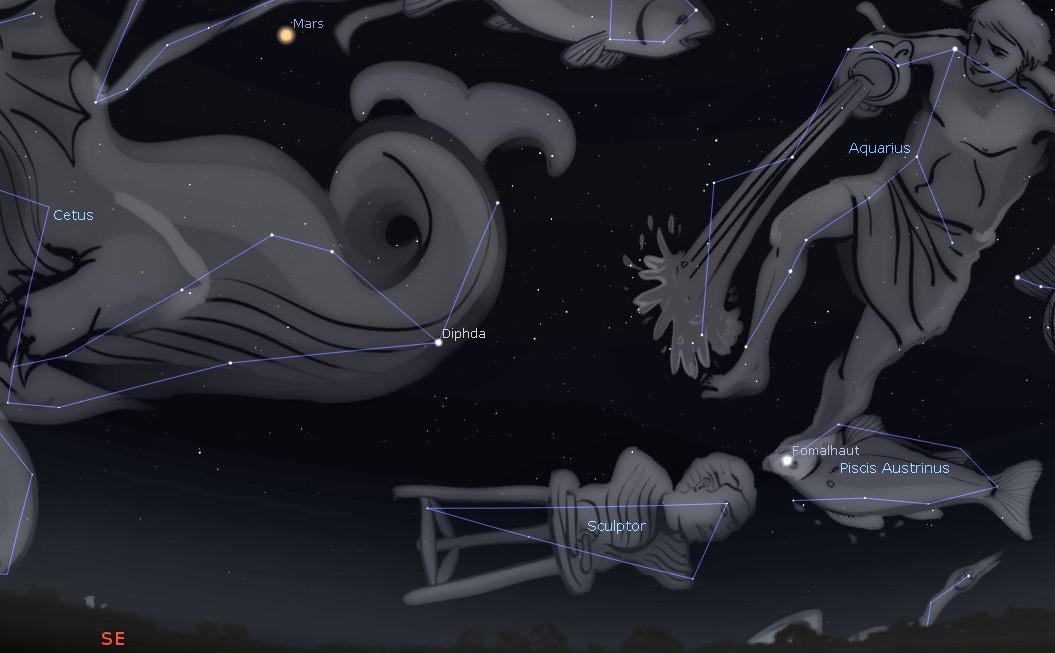This Week’s Sky at a Glance, 2020 October 24 – 31 ~by Curt Nason
The western side of the Square of Pegasus points southward to the solitary bright star Fomalhaut in the mouth of Piscis Austrinus the Southern Fish. Fomalhaut is the 18th brightest star in our night sky, and astronomers have known it is surrounded by discs of debris for many years. In 2008 an exoplanet was imaged near the inner edge of a disc but more recent images suggest it could be an expanding disc of dust caused by a collision. The eastern side of Pegasus points down to Diphda, the brightest star in the tail of Cetus the Whale. A circlet of stars well to the east forms the head of the whale.
Between Piscis Austrinus and Cetus is the dim constellation Sculptor, which is a shortened version of its original name, Apparatus Sculptoris (the Sculptor’s Studio), given by Louis de Lacaille in the 18th century. By 11 pm it is low in the south but it does have a prominent marker. Use binoculars to seek out a long triangle of dim stars stretching eastward from Fomalhaut, but don’t be discouraged if your attempt to locate Sculptor is a bust.
This Week in the Solar System
Saturday’s sunrise in Moncton is at 7:49 am and sunset will occur at 6:16 pm, giving 10 hours, 27 minutes of daylight (7:52 am and 6:23 pm in Saint John). Next Saturday the Sun will rise at 7:59 am and set at 6:05 pm, giving 10 hours, 6 minutes of daylight (8:02 am and 6:12 pm in Saint John).
The Moon is at first quarter phase on October 23 and the Puny Full Moon occurs on October 31, it being the most distant full Moon of the year. Watch it rise; it will still look big. Mars is past opposition but still about as bright as Jupiter, and it gives views of its ice cap and basaltic areas through a telescope when our atmosphere is steady. On Thursday the Moon passes below Mars in the early evening. For an observing challenge, use the Moon to locate Mars in binoculars before sunset. Jupiter has moved close enough to Saturn that they should fit within the same field of view of low power binoculars. Venus dominates the morning sky, while Mercury is at inferior conjunction this Sunday and moving into the morning sky late in the week.
With astronomy meetings and outreach activities on hold, you can watch the local Sunday Night Astronomy Show at 8 pm and view archived shows.
Questions? Contact Curt Nason.

